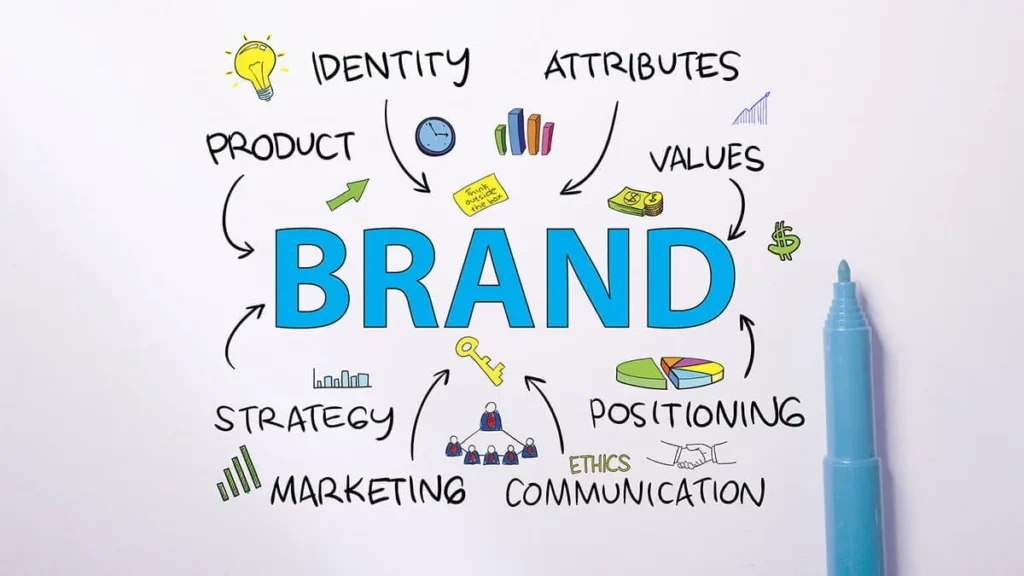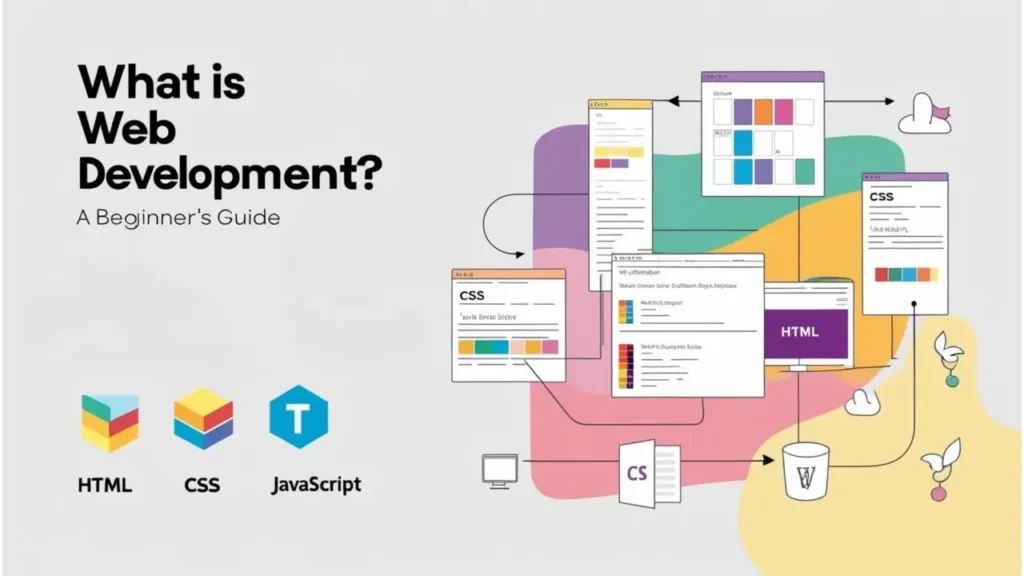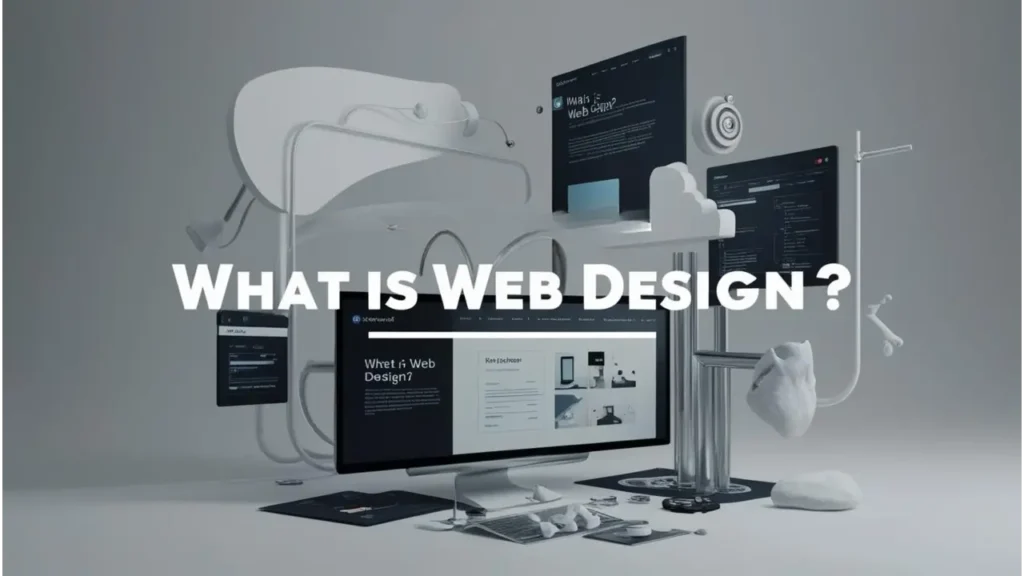In today’s competitive market, businesses must stand out to survive. With more companies competing for customer attention than ever before, the secret to gaining a competitive edge lies in effective design and branding. Design and branding are more than just logos and color schemes. They encompass the entire identity of a business, shaping how customers perceive and interact with it.
Branding reflects the personality of your business, while design communicates your values visually. Together, they form the backbone of your company’s identity, helping you create lasting impressions, foster loyalty, and build recognition. Whether you’re a startup looking to make a name for yourself or an established business in need of a refresh, design and branding are crucial to your success.
Looking to elevate your brand? Discover how our Design and Branding Services can transform your business today.
Key Takeaways:
- Branding creates a unique identity that resonates with your target audience.
- Design enhances brand visibility and drives customer engagement.
- Consistent branding differentiates you from competitors and fosters loyalty.
- Investing in professional design and branding increases business value and marketing effectiveness.
- Strong design and branding strategies improve customer experience, conversions, and retention.
Table of Contents
What is Design and Branding?
Design and branding are two interconnected elements that shape the identity of a business. While they often overlap, they serve distinct purposes:
- Design refers to the visual elements of your business, including your logo, website, packaging, and other graphics. It’s the first thing people notice about your brand.
- Branding is broader and more strategic. It encompasses the messaging, values, and personality of your company. It’s how your business makes people feel and how you communicate what you stand for. Effective branding influences perception, builds customer loyalty, and gives your business a distinct voice.

The Relationship Between Branding and Design
Design is a tool that brings branding to life. Through visual elements, design conveys the personality, values, and mission of a brand. For example, a minimalist logo and color palette may communicate sophistication and modernity, while a more playful design might represent creativity and innovation.
Both are critical for building a cohesive brand. When done right, design and branding work together to create a unified message that resonates with your audience.
Why is Branding Important for Businesses?

Branding is the foundation of your business’s identity and the driving force behind its success. Here’s why it’s essential:
1. Builds Trust and Credibility
Customers are more likely to do business with brands they trust. Trust is built over time through consistent, positive interactions with your brand. A well-established brand signals reliability and professionalism, helping potential customers feel confident in choosing your business.
Example: Think of brands like Apple or Starbucks. These companies have built trust over years of delivering consistent quality and customer experiences. Their branding reinforces reliability and credibility at every touchpoint.
2. Differentiates You From Competitors
In highly competitive industries, standing out is difficult but necessary. Branding helps you create a unique identity that differentiates you from the competition. It highlights what makes your business special and why customers should choose you over others.
For example, Tesla has distinguished itself in the automotive industry by branding itself as a leader in innovation and sustainability. Customers don’t just buy cars from Tesla; they buy into the company’s vision for the future.
3. Creates Emotional Connections
Successful branding taps into the emotions of your audience. People don’t just buy products; they buy the experience and feelings associated with a brand. By creating an emotional connection, your brand can foster loyalty and build long-term relationships with customers.
Brands like Nike have mastered this. Their “Just Do It” slogan goes beyond athletic wear, inspiring millions to push their limits and achieve greatness. Customers feel personally connected to the brand’s values of determination and perseverance.
4. Increases Brand Recognition
Recognition is key to success. The more recognizable your brand is, the more likely customers are to choose you over competitors. Strong branding helps create a memorable identity that sticks in the minds of consumers.
A simple logo or color scheme can leave a lasting impression. Consider McDonald’s golden arches or Coca-Cola’s red and white palette—these iconic brands are immediately recognizable, no matter where you are in the world.
5. Enhances Marketing Efforts
Branding supports and amplifies your marketing efforts. Without a cohesive brand, your marketing campaigns will lack consistency and direction. A strong brand identity provides the foundation for all your marketing activities, ensuring they align with your business goals and resonate with your target audience.
The Role of Design in Boosting Brand Recognition

Design plays a pivotal role in shaping how customers perceive your brand. While branding sets the stage, design makes it visually appealing and accessible. Here’s how design impacts brand recognition and overall business success:
1. Visual Identity
Your visual identity encompasses your logo, typography, color scheme, and other design elements. It’s how your brand presents itself to the world, and it plays a crucial role in how people perceive your company. The goal is to create a cohesive and consistent visual identity that reflects your brand’s values and message.
For example, Google is known for its clean, colorful logo, which reflects its user-friendly and innovative approach. Every design element reinforces the company’s mission to organize the world’s information.
2. User Experience (UX)
Design doesn’t stop at visuals. It also influences functionality and user experience (UX). A well-designed website, for instance, not only looks great but also makes it easy for customers to find what they’re looking for, resulting in better engagement and higher conversion rates.
Good design can also reduce bounce rates, as customers are more likely to stay on a site that is visually appealing and easy to navigate. In fact, 38% of people will stop engaging with a website if the content or layout is unattractive.
3. Packaging and Product Design
If you sell physical products, packaging design is a crucial part of your brand’s identity. Packaging is often the first interaction customers have with your product, and it can influence their purchasing decision. Brands like Apple and Oatly have used design to create iconic packaging that reflects their brand values and resonates with their audience.
4. The Psychology of Colors and Shapes in Branding
Colors and shapes have psychological effects on how people perceive your brand. The right combination of colors can evoke certain emotions and shape customers’ attitudes towards your business.
- Blue is often associated with trust, reliability, and calm (think Facebook and IBM).
- Red is linked to passion, excitement, and urgency (used by brands like Coca-Cola and Target).
- Green represents growth, health, and sustainability, which is why it’s often used by eco-friendly brands like Whole Foods.
Key Elements of Effective Branding
Effective branding is built on several key elements that work together to create a cohesive, memorable identity:
1. Brand Voice
Your brand voice reflects how your business communicates with its audience. Whether through website copy, social media posts, or customer service interactions, your voice should be consistent and aligned with your brand’s values and personality.
For instance, Mailchimp uses a friendly, casual tone in all of its communication. This approachable voice resonates with its audience and reflects the company’s commitment to user-centric design.
2. Mission and Values
Your mission and values serve as the foundation of your brand. They define what your business stands for and help customers connect with your brand on a deeper level. Brands like Patagonia and Ben & Jerry’s have built their reputations around their commitment to social and environmental causes.
3. Consistent Visual Design
Consistency is key when it comes to visual branding. Your logo, typography, color palette, and other design elements should be cohesive across all platforms and touchpoints, from your website to your social media profiles.
A well-designed, consistent brand identity not only enhances recognition but also builds trust. When customers see the same design elements repeatedly, they feel more familiar and comfortable with your brand.
How Strong Branding Can Set You Apart from Competitors
In a saturated market, strong branding is the difference between blending in and standing out. Here’s how effective branding can give you a competitive edge:
1. Differentiates Your Business
Branding helps communicate your unique selling proposition (USP). Whether it’s your innovative product design, excellent customer service, or commitment to sustainability, branding highlights what makes your business different from the rest.
For example, Tesla has differentiated itself in the automotive industry by branding itself as an innovator in electric vehicles and sustainable energy. This strong brand identity sets it apart from other car manufacturers.
2. Builds Emotional Connections
Customers are more likely to engage with brands that evoke emotions. By creating a brand that resonates on an emotional level, you can build stronger relationships with your audience and foster loyalty.
Brands like Coca-Cola have mastered the art of emotional branding, associating themselves with happiness and togetherness. Their holiday campaigns, for instance, are famous for evoking warmth and nostalgia, making the brand synonymous with family and celebration.
3. Positions Your Business as an Industry Leader
Strong branding positions your business as an authority in your industry. A reputable brand is often perceived as a leader and innovator, which helps build credibility and trust with customers, partners, and investors alike.
For example, Amazon has branded itself as the leader in eCommerce and customer satisfaction. Their consistent brand message—centered around convenience, speed, and reliability—has helped them become the go-to platform for online shopping.
4. Increases Brand Equity
Brand equity refers to the value that a brand brings to a business. A strong brand increases your company’s equity, enabling you to charge premium prices and grow your customer base. Companies like Apple and Louis Vuitton have built their brands around luxury and exclusivity, allowing them to maintain higher price points while still attracting loyal customers.
The Psychology of Colors and Shapes in Branding
Color and shape play a vital role in how customers perceive your brand. Understanding the psychology behind these elements can help you make informed decisions about your design choices.
| Color | Associated Emotions | Examples |
|---|---|---|
| Red | Passion, energy, urgency, excitement | Coca-Cola, Target, Netflix |
| Blue | Trust, security, calm, professionalism | Facebook, IBM, Visa |
| Green | Growth, health, eco-friendliness, wealth | Whole Foods, Tropicana, BP |
| Yellow | Optimism, warmth, clarity, happiness | McDonald’s, IKEA, Best Buy |
| Black | Luxury, sophistication, authority, power | Chanel, Louis Vuitton, Nike |
| Purple | Creativity, wisdom, royalty, luxury | Cadbury, Hallmark, Yahoo |
Shapes also contribute to how people interpret a brand. Curved shapes tend to evoke friendliness and warmth, while angular designs communicate strength, stability, and efficiency.
The Role of Digital Branding in Modern Business
In today’s digital-first world, branding goes far beyond physical assets like business cards and brochures. Your online presence—whether on social media, websites, or digital ads—is often the first touchpoint customers have with your brand. This makes digital branding essential to business success.
1. Social Media Branding
Social media is one of the most important platforms for modern branding. Through consistent messaging, visuals, and customer engagement, businesses can create an online brand presence that aligns with their overall identity.
For instance, Nike’s Instagram perfectly encapsulates their brand with motivational content, athlete partnerships, and a clean, modern design. Social media provides the perfect stage for brands to engage directly with their audience, build relationships, and amplify their reach.
2. Website and Mobile Experience
Your website is often the first impression your brand makes online. A well-designed, responsive website that reflects your brand identity helps attract visitors, keep them engaged, and convert them into customers. Similarly, with more than 50% of internet traffic coming from mobile devices, having a mobile-optimized website is crucial for creating a positive user experience.
3. Email and Content Marketing
Email campaigns and content marketing are other powerful ways to reinforce your brand. Every email or blog post should align with your brand voice and provide valuable, consistent messaging to your audience. For example, Mailchimp delivers useful tips and news in a tone that is light, friendly, and informative—reflecting their overall brand identity.
How Professional Branding and Design Boost Marketing ROI
Investing in professional branding and design doesn’t just improve aesthetics—it delivers tangible business results by improving your return on investment (ROI) in marketing. Here’s how:
1. Consistency Across Campaigns
Professional branding ensures consistency across all your marketing channels, from social media and email campaigns to TV ads and print materials. When your audience encounters the same messaging and design elements repeatedly, it increases brand recognition and trust, making your marketing efforts more effective.
2. Higher Conversion Rates
Strong design plays a significant role in improving your conversion rates. A well-designed website, for instance, guides users seamlessly through the buyer journey, making it easy for them to complete desired actions like purchasing products or signing up for newsletters.
Good design reduces friction and enhances the user experience, which leads to better engagement and more conversions. According to studies, design-driven companies outperform their competitors by as much as 219% on the S&P 500.
3. Better Customer Retention
Consistent branding helps keep customers coming back. When customers have positive interactions with your brand, they are more likely to become repeat buyers and loyal advocates. By reinforcing your brand identity through design and messaging, you improve customer retention and increase the lifetime value of your customers.
Pros and Cons of Investing in Branding and Design
| Pros | Cons |
|---|---|
| Builds Trust and Recognition: Strong branding creates familiarity and trust with customers. | Initial Costs: Branding can be expensive, especially for startups. |
| Differentiates Your Business: Branding helps set you apart from competitors. | Time-Consuming: Building a strong brand identity takes time and effort. |
| Increases Perceived Value: A professional brand allows you to charge premium prices. | Rebranding Risks: If done poorly, rebranding can alienate existing customers. |
| Amplifies Marketing ROI: Consistent branding makes your marketing more effective. | Ongoing Effort Required: Branding must evolve over time to stay relevant. |
How Our Design and Branding Service Can Help Your Business
At Wodo Digital, we help businesses create powerful, memorable brands that resonate with their target audience. Whether you’re launching a new business or rebranding an existing one, we offer a comprehensive suite of services to elevate your brand’s identity.
- Custom Logo Design: Our designers will work closely with you to craft a unique logo that represents your brand’s personality and values.
- Full Brand Strategy: We’ll help you define your brand’s voice, mission, and values, ensuring your brand is cohesive and consistent across all touchpoints.
- Website and UX Design: A seamless, mobile-friendly website is key to your online presence. We design websites that enhance user experience and drive conversions.
Interested in taking your branding to the next level? Learn more about our Design and Branding Services.
FAQs About Design and Branding
1. Why is branding important for small businesses?
Branding helps small businesses build trust and recognition, making it easier to compete with larger companies. Even if you’re a startup, strong branding can make your business look more professional and credible.
2. How does design impact customer perception?
Design influences how customers perceive your brand. A professional design creates a positive impression, while poor design can drive potential customers away. Well-designed visuals can enhance your credibility, trustworthiness, and overall brand experience.
3. How much should a business invest in branding?
Branding investment varies depending on the size of your business and your goals. However, strong branding often requires a significant upfront investment in professional design, strategy, and marketing materials. The long-term benefits, including increased customer loyalty and brand equity, usually outweigh the initial cost.
4. Can branding increase sales?
Yes! Strong branding builds trust, loyalty, and emotional connections with customers, all of which contribute to higher sales. When customers recognize and trust your brand, they are more likely to choose your products or services over those of your competitors.
5. What’s the difference between branding and a logo?
A logo is just one element of your overall branding strategy. Branding encompasses your company’s entire identity, including its voice, values, mission, and how it interacts with customers. A logo visually represents your brand, but branding is much broader.
Conclusion
Design and branding are no longer optional in today’s highly competitive business environment—they are essential. From building trust and recognition to differentiating your business from competitors, branding and design are powerful tools that drive success. When done right, they create lasting emotional connections with your audience, enhance your marketing efforts, and boost your bottom line.
Investing in professional branding and design not only helps you stand out but also adds significant value to your business in the long term. Whether you’re just starting out or looking to rebrand, the right strategy will ensure that your business remains memorable, trustworthy, and competitive.
Ready to build a strong, impactful brand? Contact us today to learn how we can help you create a brand that resonates with your audience.












